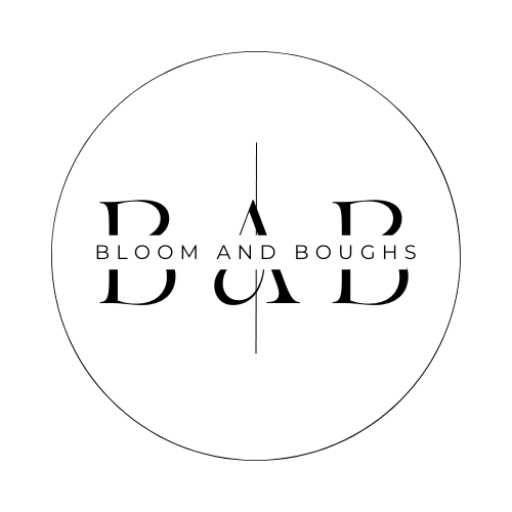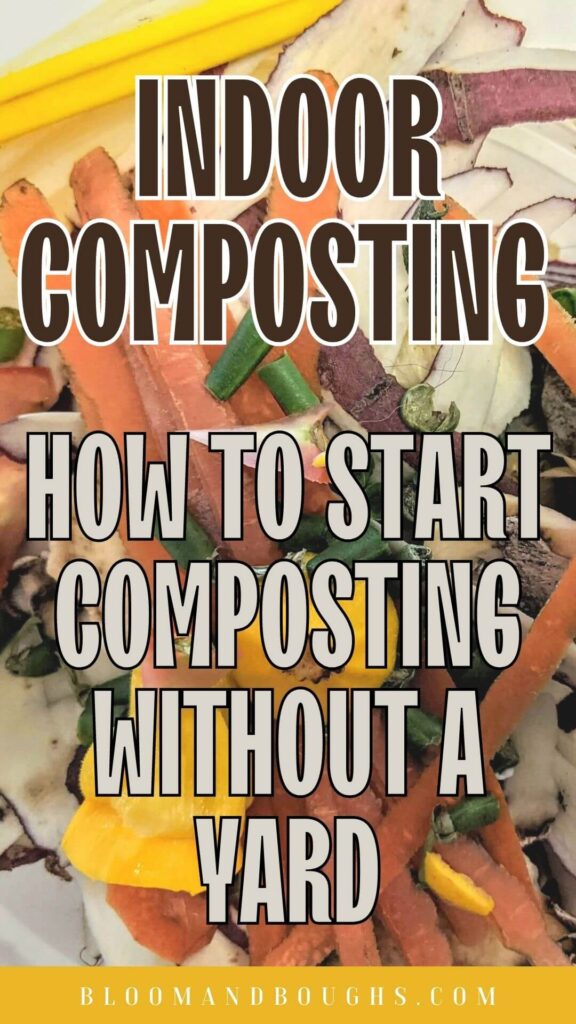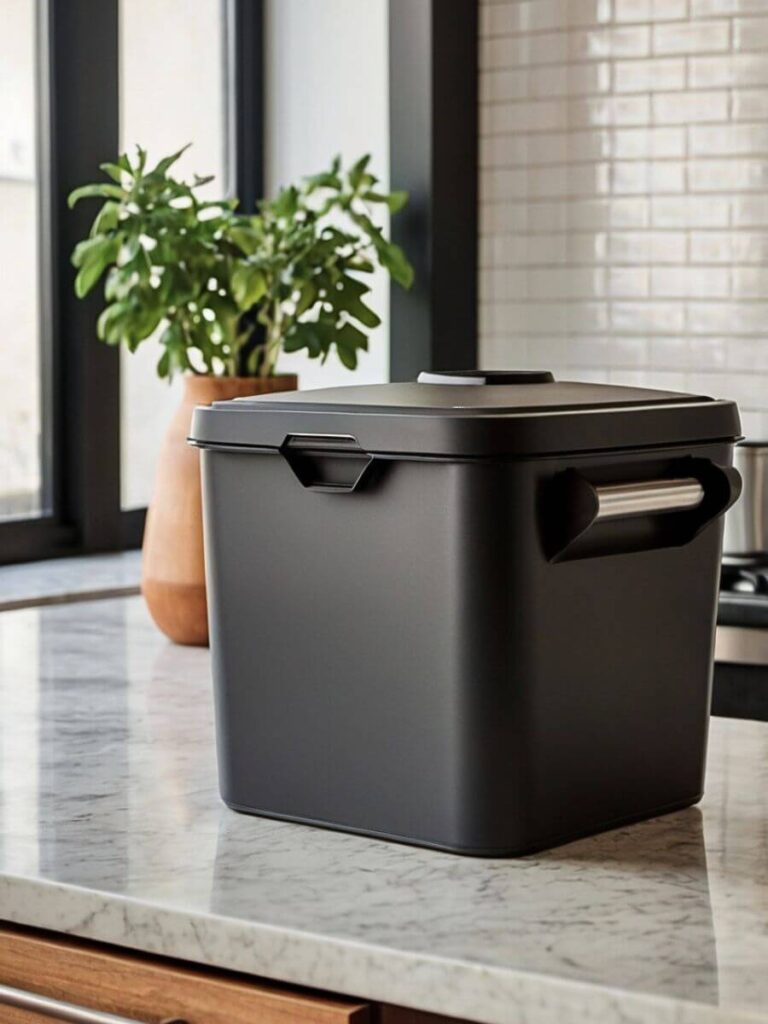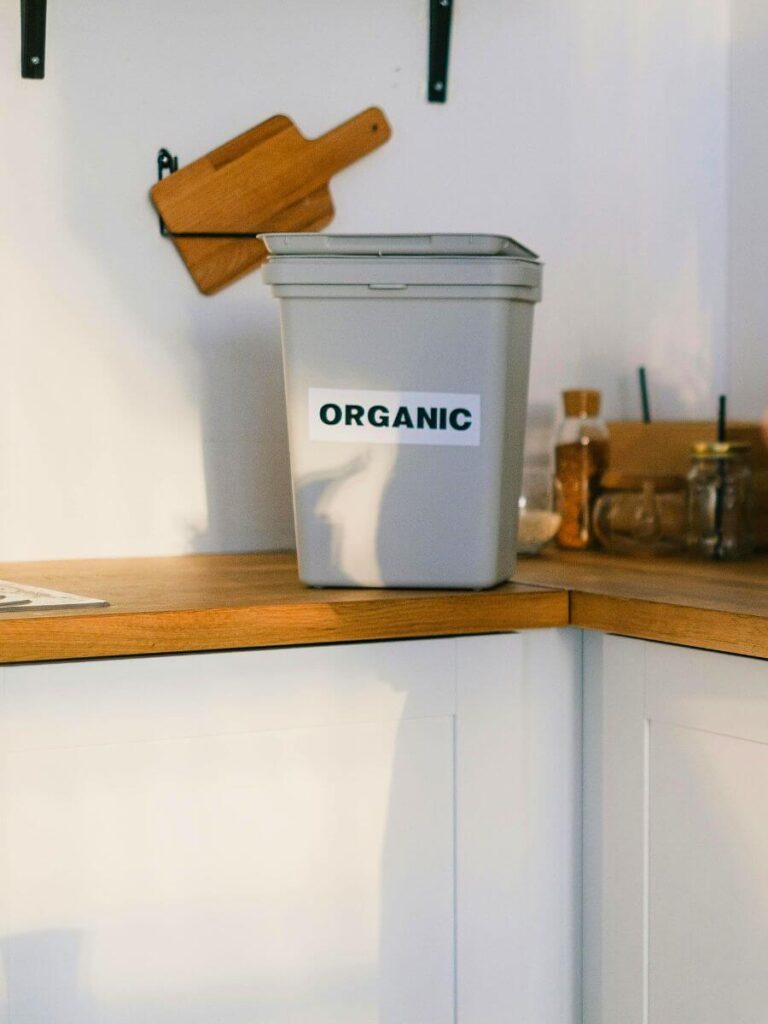Hey there,
Are you living in an apartment and dreaming of reducing waste but worried about not having a yard? You’re in the right place! Indoor composting is a great way to handle kitchen scraps, reduce waste, and enrich houseplants’ soil without outdoor space. Let’s dive into a few easy, odor-free methods that make composting at home a breeze.
This site contains affiliate links. I may earn a small commission, at no extra cost to you. I’d appreciate it if you can support me.
Why Indoor Composting?
Composting indoors is an excellent choice for anyone looking to live sustainably. It’s a way to recycle kitchen waste and turn it into a rich, nutrient-dense material for plants. When you compost, you’re also reducing waste in landfills. That’s a win for both you and the planet!
While many people associate composting with outdoor bins, you don’t need a big backyard to get started. Indoor composting is possible, compact, and surprisingly simple. With a bit of practice, it becomes a seamless part of your kitchen routine.
Choosing the Right Composting Method for Indoors
There are two main ways to compost indoors: vermicomposting (using worms) and Bokashi composting (a fermentation process). Both methods are suitable for small spaces and are nearly odorless if done right.
Vermicomposting: The Worm Solution
Vermicomposting uses worms—specifically, red wigglers—to turn organic waste into compost. These worms break down food scraps into nutrient-rich castings, which you can use for your plants. Vermicomposting bins are compact, making them perfect for indoor spaces.
Here’s how to get started with vermicomposting:
- Choose the Right Container: Find a ventilated, small compost bin for your worms. You can buy one or make your own. It’s important to allow airflow but also prevent worms from escaping.
- Prepare the Bedding: Add shredded paper, cardboard, and a bit of soil to create a comfortable bed for your worms.
- Add Worms: You’ll need red wigglers to handle the food waste typically added to indoor compost. You can buy them at a garden store or order them online.
- Feed the Worms: Add small amounts of food scraps—like fruit peels, coffee grounds, and vegetable scraps. Avoid meat, dairy, and oily foods, which can cause odors.
- Maintenance: Keep an eye on moisture; the bedding should feel like a damp sponge. Every few weeks, check on your worms and adjust as needed.
- Harvesting Castings: After a few months, your worms will have created castings, a dark, crumbly material that’s perfect for plants. Simply scoop it out and add it to your houseplants for a nutrient boost.
Benefits of Vermicomposting: Vermicomposting is an easy, odor-free way to compost indoors. Worms work quickly, and their castings are an excellent fertilizer. Plus, this method is very compact, requiring minimal space.
Bokashi Composting: Fermentation-Based Composting
Bokashi composting is another space-saving indoor option. It uses microorganisms to ferment food waste in a sealed container. Because it’s an airtight process, it doesn’t produce the traditional “rotting” smell and can be done under a kitchen sink or even in a cupboard.
Here’s a step-by-step guide to starting with Bokashi:
- Get a Bokashi Bin: This is an airtight container with a spigot for draining liquid. You’ll also need Bokashi bran, which contains the microorganisms that start the composting process.
- Add Food Waste and Bran: Place your food scraps into the bin, sprinkle a bit of Bokashi bran on top, and press everything down to remove air pockets. Repeat until the bin is full.
- Seal the Bin: Keep the lid tightly closed. The fermentation process works best when oxygen is limited.
- Drain Liquid Regularly: As the food waste ferments, it releases liquid. Drain this “Bokashi tea” every few days—it’s a powerful fertilizer you can dilute for houseplants.
- Bury or Compost: After about two weeks, the food scraps are “pre-composted” and ready for the final stage. If you have a second Bokashi bin, you can start filling it while the first batch finishes. You can also bury it in the soil or add it to a larger compost pile.
Benefits of Bokashi Composting: Bokashi is ideal for small spaces because it’s odor-free and doesn’t require worms or much maintenance. Plus, it’s fast! The fermentation process takes just a couple of weeks.
Indoor Compost Bin Options
Your indoor compost bin is crucial for a smooth composting experience.
Here’s a look at some options:
- Vermicomposting Bins: These come in various sizes, with ventilation to keep worms happy and odor under control. Look for stackable models that make it easy to harvest worm castings.
- Countertop Compost Bins: Many people use small countertop bins as a temporary holding spot for scraps. They often have a charcoal filter to manage odors and can be easily emptied into your main compost bin.
- Bokashi Bins: Specially designed for the fermentation process, Bokashi bins are airtight and compact. They usually include a spigot for easy draining.
When choosing a bin, consider your space and which method feels easiest to manage. If you’re working with a very small kitchen, a Bokashi bin under the sink might be ideal. A worm bin could be the perfect fit for those with a little more room.
Odor-Free Indoor Composting Tips
Indoor composting doesn’t have to mean unpleasant smells.
Here are some tips to keep your compost fresh and odor-free:
- Balance “Greens” and “Browns”: In composting, “greens” are nitrogen-rich materials like food scraps, while “browns” are carbon-rich materials like paper and cardboard. Keeping these balanced helps control odors.
- Avoid Certain Foods: Meat, dairy, and oily foods can attract pests and produce bad smells. Stick to plant-based scraps for the best results.
- Monitor Moisture: If you’re vermicomposting, make sure the bedding is damp but not too wet. Excess moisture can lead to unpleasant smells.
- Drain Liquids: In Bokashi composting, draining liquid regularly keeps odors at bay and provides a great plant fertilizer.
If you notice any unpleasant smells, take it as a signal to adjust moisture levels, add more “browns,” or check that the lid is sealed properly.
How to Use Indoor Compost
After all your hard work, it’s time to use your compost!
Here are some ideas:
- Houseplants: Mix your finished compost or worm castings with potting soil to create a nutrient-rich mix for your indoor plants.
- Outdoor Transfer: If you don’t need it right away, consider sharing your compost with local community gardens, friends, or family with gardens.
- Direct Soil Application: For Bokashi users, burying the pre-compost in a plant pot with soil is a great way to finalize the composting process, adding valuable nutrients to the soil.
Indoor composting offers you a valuable way to recycle waste and help the planet, all while enhancing the health of your plants.
Product Recommendations
Do you need more information about composting? Just read my other articles on this topic:
Composting for beginners – How to start composting? | Bloom and Boughs
Top 10 Mistakes New Composters Make (And How to Avoid Them) | Bloom and Boughs
Conclusion
Indoor composting is a wonderful way to reduce waste and benefit your plants, even if you live in a small space. With methods like vermicomposting and Bokashi, it’s possible to compost without worrying about smells or mess.
Remember, composting is about progress, not perfection. Each scrap you compost is a step toward a more sustainable lifestyle. Whether you’re feeding a worm bin or layering food scraps in a Bokashi bin, you’re making a positive impact on the environment—right from your kitchen.
Happy composting!








0 Comments